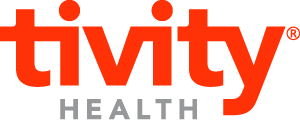
In the age of Amazon, Netflix and Pandora, whereby consumer retail brands are using micro-segmentation marketing to target consumers with the right message at the right point of the consumer journey, and provide personalized product recommendations and an outstanding consumer experience, today’s health care consumers are looking for much of the same.
According to a 2014 report by Deloitte, health plan members want a better consumer health care experience, more product choices and smarter, personalized technologies.
With enrollment in Medicare Advantage expected to increase to an all-time high of 24.4 million beneficiaries this year, there is a tremendous opportunity for plans to better engage their members and offer a more personalized experience.
In fact, according to a recent survey by HealthMine, 40% of Medicare Advantage members say their plan’s communications are impersonal and mass-oriented.
For micro-segmentation marketing to be effective and enable personalized programming at scale, health plans need a deep understanding of their members’ attitudes, behaviors and preferences. This understanding requires a robust data set which incorporates key factors that are identified through comprehensive qualitative and quantitative research. The next step is using this rich information for personalized engagement in programs that improve health outcomes and lower costs.
How Micro-Segmentation Marketing Enables Personalization at Scale
Without micro-segmentation, members receive generic messages that fail to address their individual desires, goals and challenges. Plans also fall short in identifying the right solutions and the next best offer, or the action a member is likely to take.
Micro-segmentation allows health plans to target the right members, at the right time of their journey, with the right messages and solutions to achieve the best outcomes.
In fact, personalization has been shown to reduce acquisition costs of new customers by as much as 50%, increase revenues by 5 to 15%, and increase the efficiency of marketing spend by up to 30%.
Developing member level personas, or segments, informs member outreach and engagement strategies. Yet they are most effective when they are based on ethnographic research that identifies defining motivators, attitudes, barriers and preferred activities. Quantitative analysis then allows qualitative insights to be reflected in specific identifiable factors in the data.
With hundreds of variables however, artificial intelligence (AI) and machine learning can efficiently refine models to include only the clusters of factors most reflective of a specific persona. To assign personas at scale, AI can identify proxies for subjective factors in accessible data sets, such as consumer data. AI not only allows health plans to categorize members into personas, but also to understand the prevalence of risk factors for social isolation and loneliness and the other social determinants of health, which brings a wide array of factors together to inform how best to engage members with these risks.
AI-enabled member-level modeling means every individual becomes a “snowflake,” with their own attributes and data that indicate the likelihood they are to engage with specific solutions.
Yet the key between knowing the right solution and the next best offer, and being able to act on it at scale, lies in understanding the groupings inside of the personas that share a similar next best offer. The easiest way to do that is to cluster the personas into micro-segments, or what is more commonly used in marketing lexicon, tribes.
Micro-segmentation allows for personalization to be in the right context and in the right stage of the consumer journey so members are offered programs that are appealing and relevant, which increases the likelihood that they will engage and sustain that engagement. It also means that as members meaningfully participate with the program, that data can then be used to make yet another next best offer through the next stage of the customer journey.
For example, a health plan can identify a persona who prefers to exercise alone and is motivated by convenience. Within that group of members, they may also find there is a subset of members who share the same attributes, same stage of the consumer journey and the same probability for engaging with a given solution. Although this group may have started as a persona, it’s the commonalities within their micro-segment that now allows the health plan to target them with the perfect message and solution, and at the right time. Targeting tribes allows a more refined engagement strategy inside an otherwise categorical member persona.
At Tivity Health, we use member eligibility records combined with dozens of transaction-level, third party consumer data points to assign millions of members a persona, use AI to construct micro-segmentation modeling to inform member outreach, and offer engagement strategies to inform the next best offer within our suite of solutions. Tivity Health does health differently. By taking a proactive approach to health, we are helping people live longer and be healthier.
Identifying the perfectly matched message and solution, and at the right time, for each member is the key to effective engagement marketing. To learn more about our solutions for Medicare Advantage plans, contact us today.














